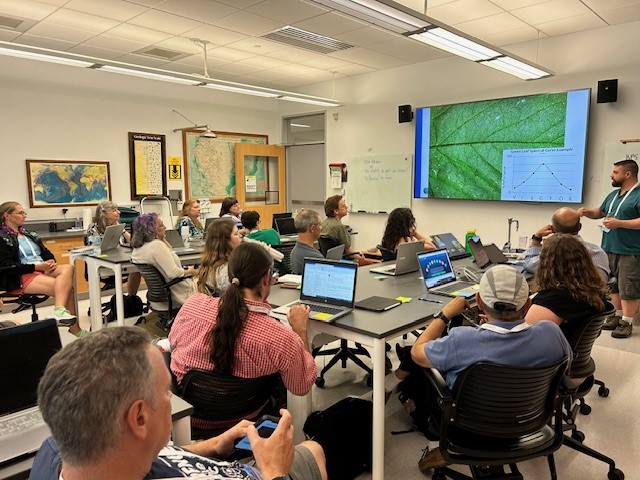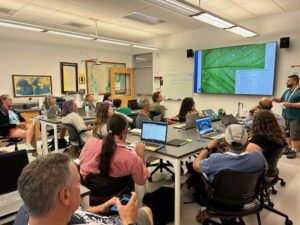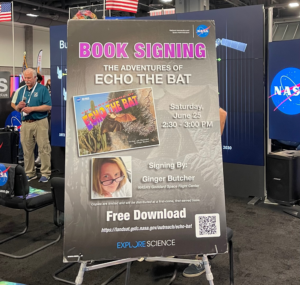 This weekend, at the annual American Library Association meeting—considered “the world’s largest library event”— Landsat was abound.
This weekend, at the annual American Library Association meeting—considered “the world’s largest library event”— Landsat was abound.
At the NASA booth, Landsat-themed, hands-on activities including a DIY Spectrometer Maker project, known as STELLA, and an Adventure of Echo the Bat book signing took place.
On Saturday, June 25, a NASA hyperwall talk about STELLA was given by Mike Taylor. The spectrometer helps illustrate how Landsat and other Earth observation instruments work by demonstrating how measuring reflected and emitted energy can be for applications such as detecting landcover types and assessing plant health. The project can be assembled with basic electronic components, 3D printed housings, and basic soldering skills and is a perfect project for Library Makerspaces.
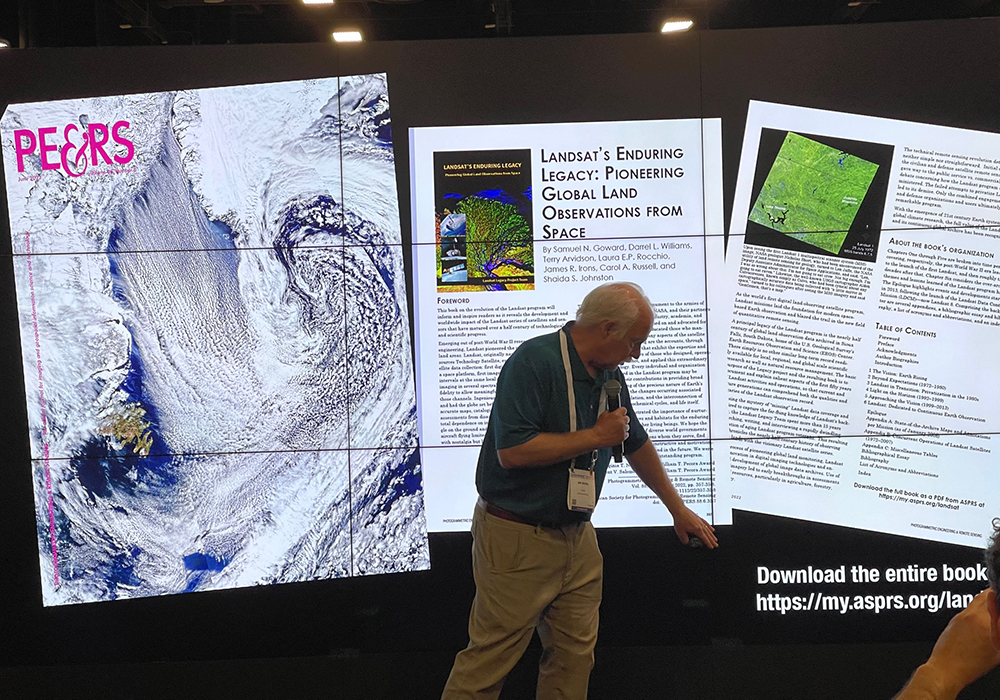
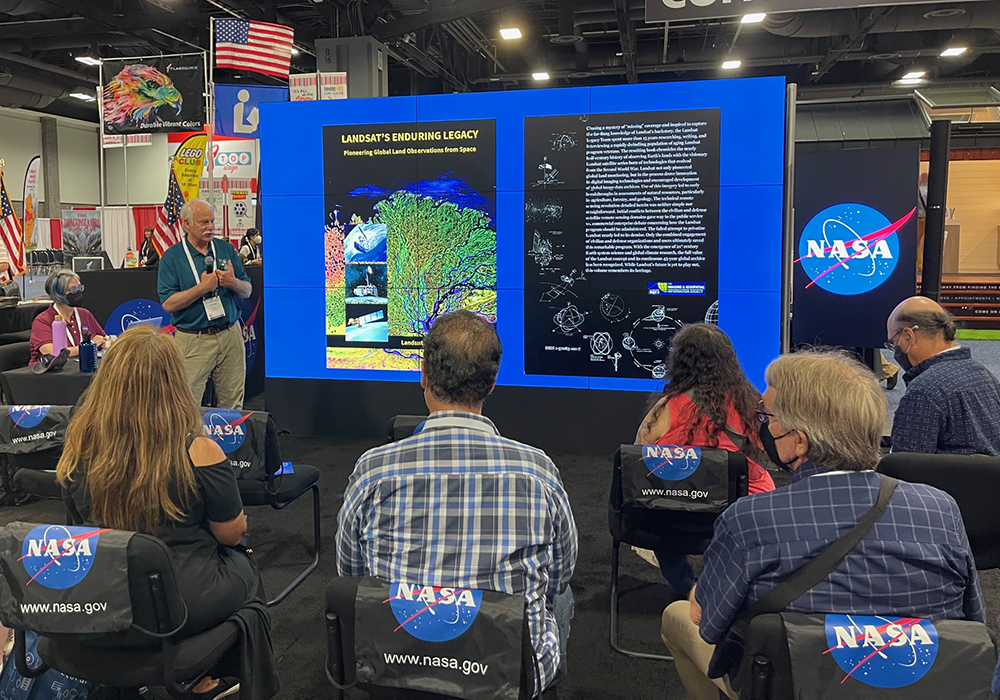
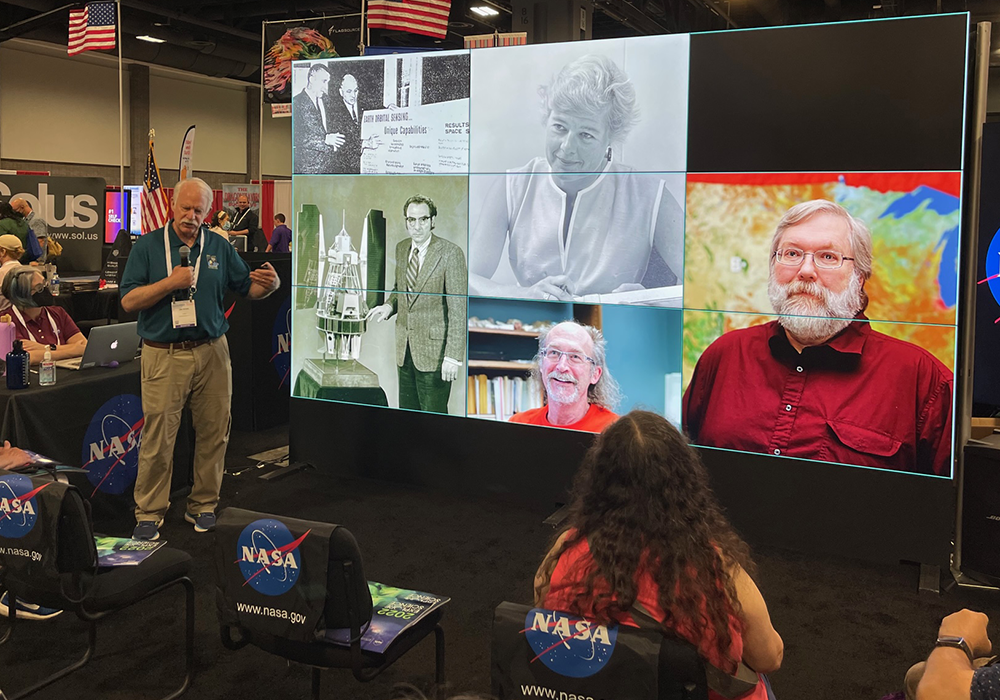
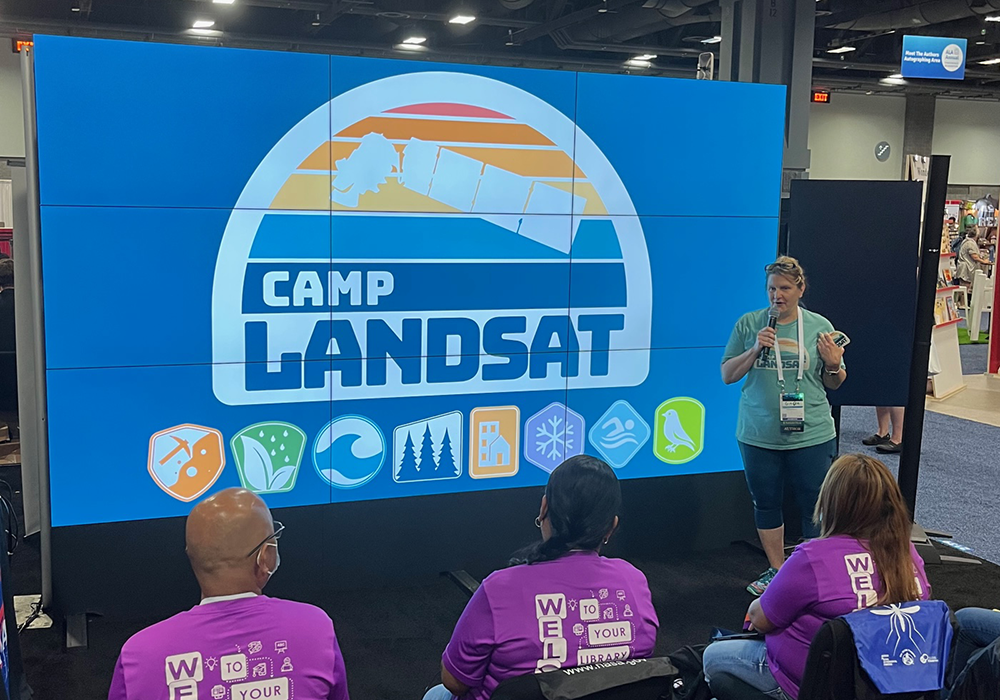
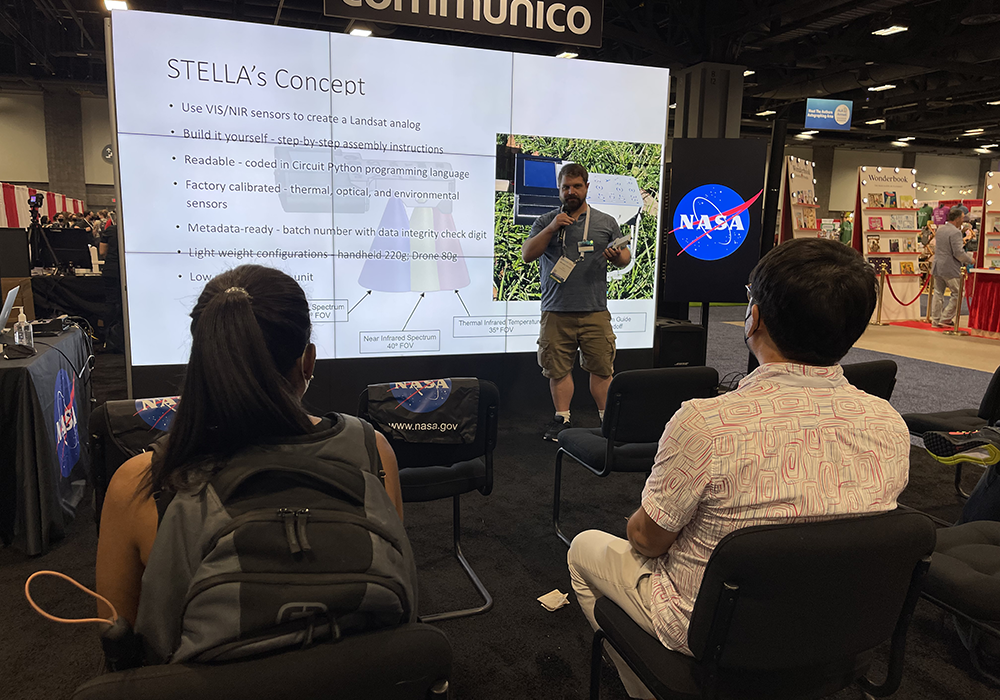
On Sunday, Jim Irons, the former Landsat 8 Project Scientist, gave a talk about the book Landsat’s Enduring Legacy: Pioneering Global Land Observations from Space. Written in partnership with the NASA History Office and published by ASPRS, the book gives context to the long history of the Landsat program, its visionaries, and its technological challenges and triumphs. As of June 2022, the digital version of the nearly 600-page book has been made open access by ASPRS.
Also, on Sunday, Ginger Butcher gave a talk about Camp Landsat and in a second talk announced new content for the upcoming Camp Landsat 2022 outreach campaign, including the revival of The Adventure of Echo the Bat as an online interactive story. Watch the trailer here:

